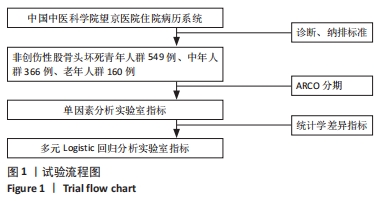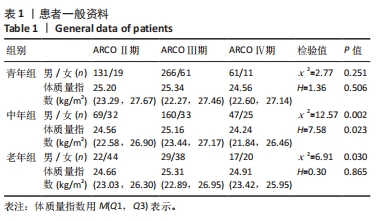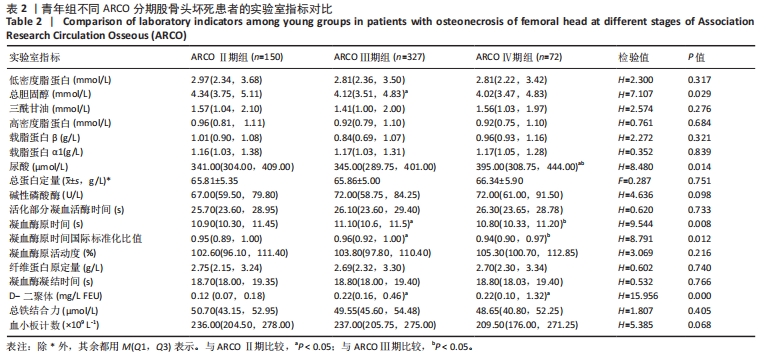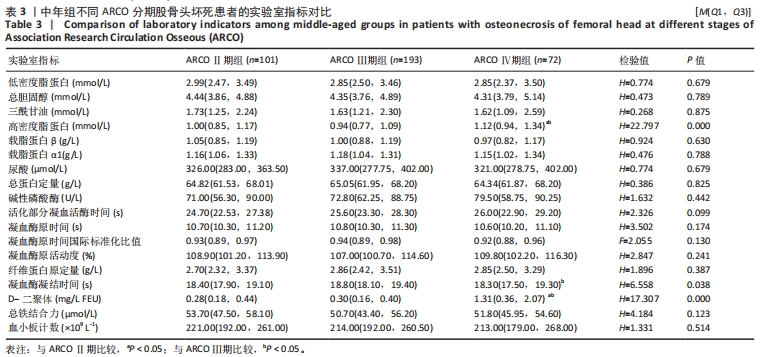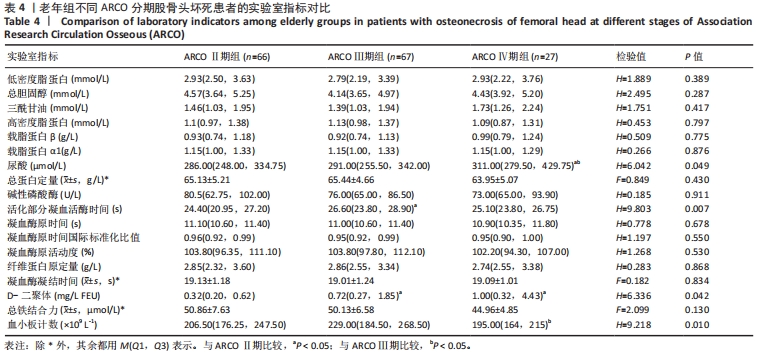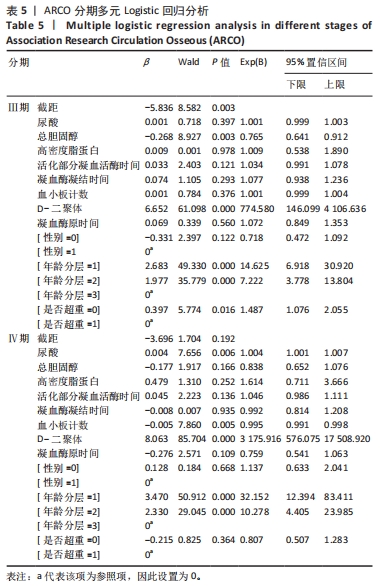[1] ZHAO D, ZHANG F, WANG B, et al. Guidelines for clinical diagnosis and treatment of osteonecrosis of the femoral head in adults (2019 version). J Orthop Translat. 2020;21:100-110.
[2] 孙伟,高福强,李子荣. 股骨头坏死临床诊疗技术专家共识(2022年)[J]. 中国修复重建外科杂志,2022,36(11):1319-1326.
[3] ZHAO DW, YU M, HU K, et al. Prevalence of Nontraumatic Osteonecrosis of the Femoral Head and its Associated Risk Factors in the Chinese Population: Results from a Nationally Representative Survey. Chin Med J (Engl). 2015;128(21):2843-2850.
[4] MONT MA, ZYWIEL MG, MARKER DR, et al. The natural history of untreated asymptomatic osteonecrosis of the femoral head: a systematic literature review. J Bone Joint Surg Am. 2010;92(12):2165-2170.
[5] IKEUCHI K, HASEGAWA Y, SEKI T, et al. Epidemiology of nontraumatic osteonecrosis of the femoral head in Japan. Mod Rheumatol. 2015; 25(2):278-281.
[6] CUI Q, JO WL, KOO KH, et al. ARCO Consensus on the Pathogenesis of Non-traumatic Osteonecrosis of the Femoral Head. J Korean Med Sci. 2021;36(10):e65.
[7] HUANG C, WEN Z, NIU J, et al. Steroid-Induced Osteonecrosis of the Femoral Head: Novel Insight Into the Roles of Bone Endothelial Cells in Pathogenesis and Treatment. Front Cell Dev Biol. 2021;9:777697.
[8] YU X, ZHANG S, ZHANG B, et al. Relationship of idiopathic femoral head necrosis with blood lipid metabolism and coagulation function: A propensity score-based analysis. Front Surg. 2022;9:938565.
[9] Zhang Y, Sun R, Zhang L, et al. Effect of blood biochemical factors on nontraumatic necrosis of the femoral head : Logistic regression analysis. Orthopade. 2017;46(9):737-743.
[10] Xu Q, Chen H, Chen S, et al. Development and validation of a nomogram for predicting the probability of nontraumatic osteonecrosis of the femoral head in Chinese population. Sci Rep. 2020;10(1):20660.
[11] 陈立刚,何晓铭,谭昱,等. 基于病因和国际骨微循环研究协会分期的股骨头坏死患者骨代谢水平研究[J]. 中国组织工程研究, 2024,28(16):2461-2466.
[12] Yoon BH, Mont MA, Koo KH, et al. The 2019 Revised Version of Association Research Circulation Osseous Staging System of Osteonecrosis of the Femoral Head. J Arthroplasty. 2020;35(4):933-940.
[13] MONT MA, HUNGERFORD DS. Non-traumatic avascular necrosis of the femoral head. J Bone Joint Surg Am. 1995;77(3):459-474.
[14] 陈卫衡. 基于X线的股骨头坏死保髋疗效评价方法研究[J]. 中华关节外科杂志(电子版),2017,11(3):222-227.
[15] 刘光波,卢强,全琦,等. 股骨头骨坏死塌陷预测研究进展[J]. 解放军医学院学报,2018,39(9):814-818.
[16] Kuroda T, Tanabe N, Wakamatsu A, et al. High triglyceride is a risk factor for silent osteonecrosis of the femoral head in systemic lupus erythematosus. Clin Rheumatol. 2015;34(12):2071-2077.
[17] Xu Z, Dai X, Yao Y, et al. Higher Levels of Serum Triglycerides were Associated with Postoperative Deep Vein Thrombosis After Total Hip Arthroplasty in Patients with Nontraumatic Osteonecrosis of the Femoral Head. Int J Low Extrem Wounds. 2016;15(1):41-44.
[18] ZHAO DW, YU M, HU K, et al. Prevalence of Nontraumatic Osteonecrosis of the Femoral Head and its Associated Risk Factors in the Chinese Population: Results from a Nationally Representative Survey. Chin Med J (Engl). 2015;128(21):2843-2850.
[19] CALVO-ALEN J, MCGWIN G, TOLOZA S, et al. Systemic lupus erythematosus in a multiethnic US cohort (LUMINA): XXIV. Cytotoxic treatment is an additional risk factor for the development of symptomatic osteonecrosis in lupus patients: results of a nested matched case-control study. Ann Rheum Dis. 2006;65(6):785-790.
[20] ZHAO G, YAMAMOTO T, MOTOMURA G, et al. Cholesterol- and lanolin-rich diets may protect against steroid-induced osteonecrosis in rabbits. Acta Orthop. 2013;84(6):593-597.
[21] 李获,王鹏,高健明,等. 股骨头坏死血运重建与内部微观结构改变的关系[J]. 中国组织工程研究,2022,26(9):1323-1328.
[22] 严谨,魏秋实,田媛媛,等. 超声造影在股骨头坏死血流灌注中的应用价值[J]. 中华医学超声杂志(电子版),2021,18(3):301-306.
[23] Johnson ED, Schell JC, Rodgers GM. The D-dimer assay. Am J Hematol. 2019;94(7):833-839.
[24] LI L, WANG Y, YU X, et al. Bone marrow mesenchymal stem cell-derived exosomes promote plasminogen activator inhibitor 1 expression in vascular cells in the local microenvironment during rabbit osteonecrosis of the femoral head. Stem Cell Res Ther. 2020;11(1):480.
[25] PENG KT, HUANG KC, HUANG TW, et al. Single nucleotide polymorphisms other than factor V Leiden are associated with coagulopathy and osteonecrosis of the femoral head in Chinese patients. Plos One. 2014;9(8):e104461.
[26] 李鑫德,苗志敏,刘艳红,等. 1713例痛风急性发作诱因分析[J]. 山东医药,2012;52(18):62-64.
[27] GALVAO I, DIAS AC, TAVARES LD, et al. Macrophage migration inhibitory factor drives neutrophil accumulation by facilitating IL-1beta production in a murine model of acute gout. J Leukoc Biol. 2016; 99(6):1035-1043.
[28] WU X, XU W, FENG X, et al. TNF-a mediated inflammatory macrophage polarization contributes to the pathogenesis of steroid-induced osteonecrosis in mice. Int J Immunopathol Pharmacol. 2015;28(3): 351-361.
[29] JIN S, MENG C, HE Y, et al. Curcumin prevents osteocyte apoptosis by inhibiting M1-type macrophage polarization in mice model of glucocorticoid-associated osteonecrosis of the femoral head. J Orthop Res. 2020;38(9):2020-2030.
[30] TAN B, LI W, ZENG P, et al. Epidemiological Study Based on China Osteonecrosis of the Femoral Head Database. Orthop Surg. 2021; 13(1):153-160. |

